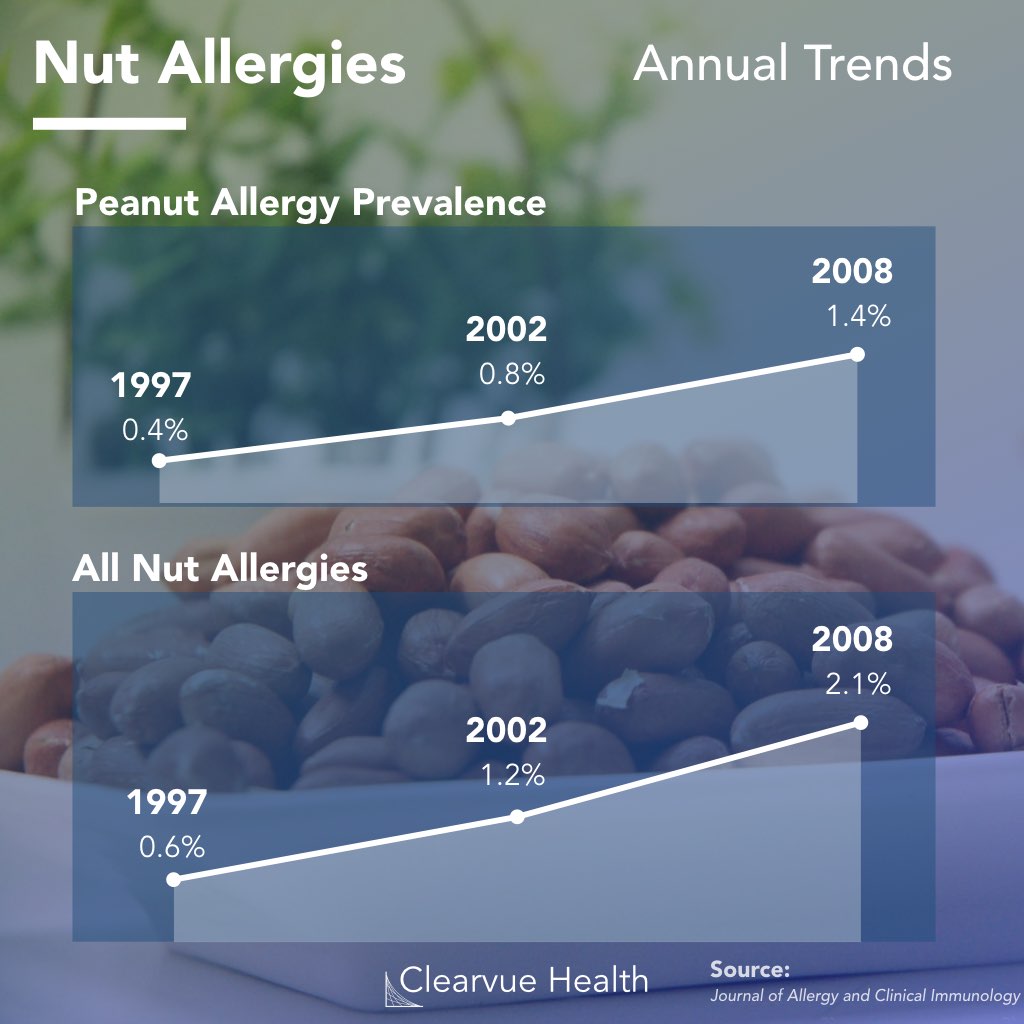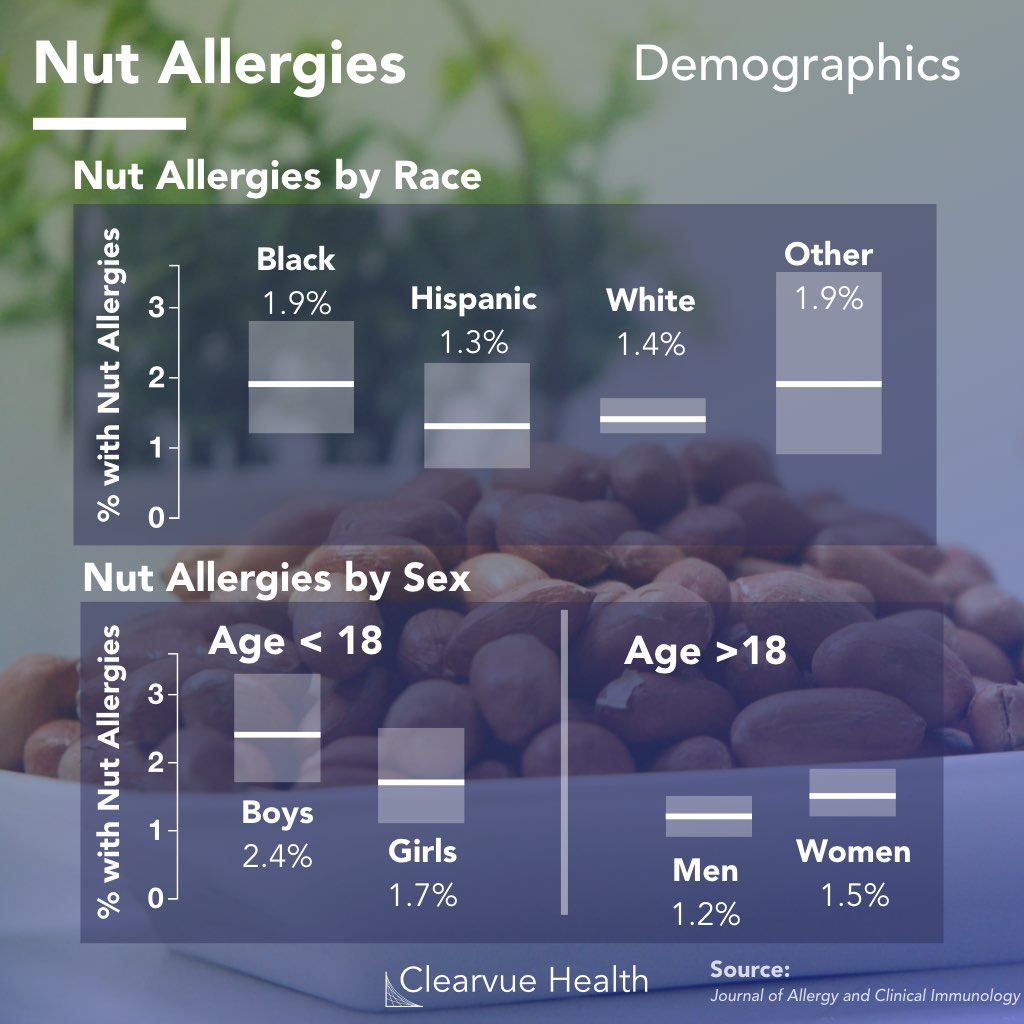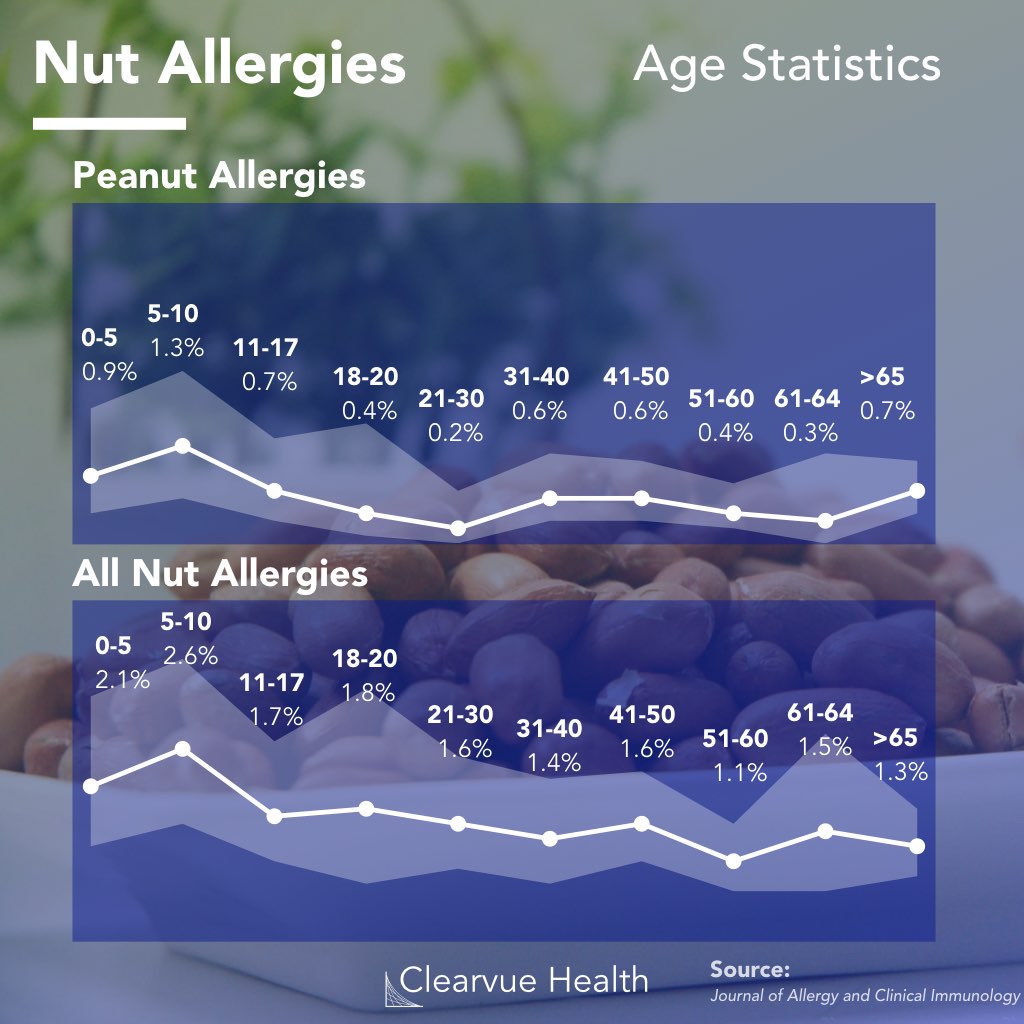Nut allergies are widely prevalent and growing in the United States.
Most patients with nut allergies of any type have peanut allergies.
We have visualized the data by race, by age, and its growth over time.


If you feel that more kids are getting peanut allergies today than in the past, you may be right.
Nut allergies are one of the most common allergies in the United States, and the prevalence is growing every year.
Unlike some allergies such as hay fever (pollen), nut allergies are particularly dangerous as they have the potential to cause choking and anaphylactic shock.
When patients with nut allergies come in contact with nuts or their residues, their throats can close causing them to struggle to breathe and possibly choke.
The other issue with nut allergies is that nut based or peanut based products can be found in many of our foods today.
Even if patients do a great job avoiding peanuts, they still risk an allergic reaction if they accidentally come in contact with products containing nuts or nut residues.
Researchers systematically surveyed 5300 households to determine the prevalence of nut allergies, including peanut allergies.
Based on surveys across 3 years, researchers were able to estimate how nut allergy prevalence is changing in the United States. They calculated percentages rather than raw population numbers to account for population growth.

The estimates show that the rate of peanut allergies nearly doubled from 1997 to 2002 and approximately tripled from 1997 to 2008.
They also measured all other nuts combined including brazil nuts and walnuts along with peanuts, and showed a similar trend, though most of this was presumably driven by peanut allergies, the most common of the nut allergies.

Researchers also examined race to see whether people of different races had different nut allergy rates.
In the chart, the solid white bars represent the estimated prevalence and the pale white boxes around the bars represent the margins of error.
The data on race had large margins of error, but we can see some interesting trends. For example, African Americans do appear to have a slightly higher rate of nut allergies than Caucasian Americans. However, with the small sample side in the study, it's difficult to know for sure.
When researchers looked at nut allergy prevalence between genders, they found an interesting difference depending on the patient’s age. Boys under age 18 had a higher prevalence than girls, however women above age 18 had a higher prevalence than men.

When researchers looked more closely at age, they found that the odds of having a nut or peanut allergy can vary greatly over a lifetime.
In the chart above, the solid white line represents the estimated prevalence of allergies for each age range studied, and the pale white area around the line represents the margins of error at every age.
While the margins of error are high, we can see that the prevalence for both peanut allergies and nut allergies appears to peak at age 5-10, and declines as people get older.
This shows that for many people their allergies may get better as they get older, though for some, they can expect a lifetime of allergies.